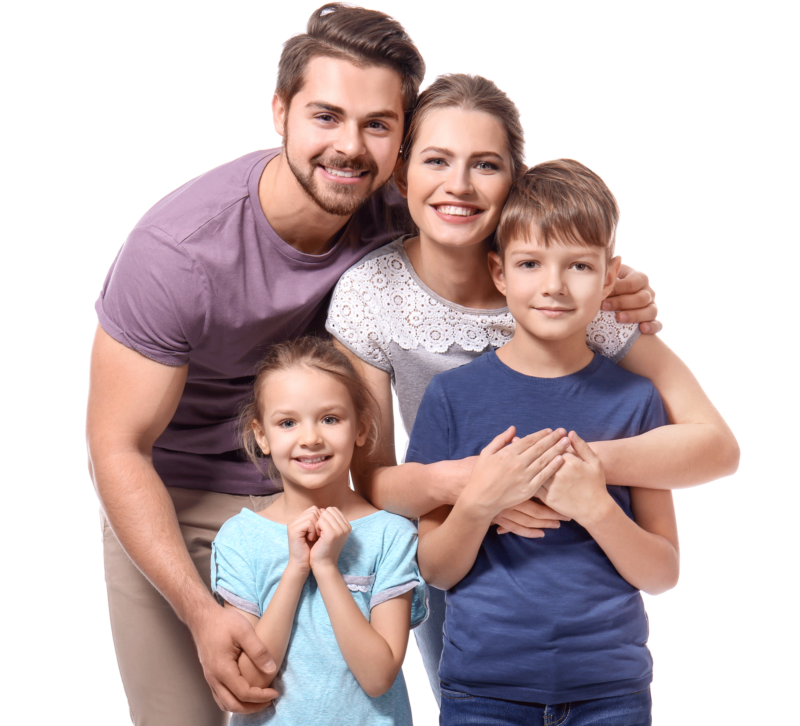Key Points:
- Exercise is a proven, evidence-based intervention for individuals with autism, promoting development in social, emotional, and independent skills.
- Recreation therapy interventions, including exercise, have been effective in helping individuals with autism achieve their personalized goals and enhance their overall quality of life.
- Expanding the use of recreation therapy interventions like exercise, along with ongoing research and reviews, will further strengthen the already well-established evidence supporting exercise as a therapeutic practice for individuals with autism.
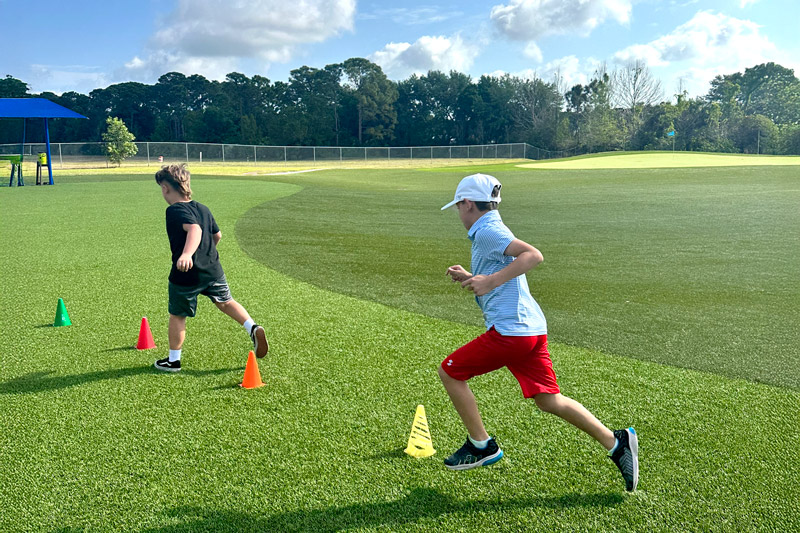
Athletes participating in an adaptive obstacle course
Recreation Therapy is a fast-growing, therapeutic practice that uses the modality of leisure and recreation to support individuals in enhancing or preserving their physical, mental, social, emotional, and spiritual wellbeing (NCTRC, 2024). One evidence-based intervention that has yielded increasingly successful results, specifically for those individuals with an autism diagnosis, is exercise. The “physical exercise-intervention program,” as seen in a long-term study, resulted in decreases in core symptoms of autism leading to the conclusion that exercise does expand the scope of possibilities within this community (Toscano et al., 2022). As a Certified Therapeutic Recreation Specialist (CTRS) working directly with this population, I regularly see evidence of this fact across sports and with individuals of varying abilities and needs.
Exercise as an intervention provides endless opportunities for impact for individuals with autism as tools and strategies can be tailored to meet individual recipient needs. With the right personalized support and interventions, these individuals can develop leisure skills that they can enjoy throughout their lives, allowing them to actively participate in various recreational activities (Devine, Ripp, 2017). We do this daily at the Els for Autism Foundation ® with our clients with positive results. Over time you can clearly notice improved skills and confidence that the clients exhibit as they perform tasks.
Common challenges individuals with autism face include difficulties with social communication, executive functioning, and mental health concerns (Stavrou, 2024). Under the care of a CTRS, exercise produces statistical improvements in socialization, self-confidence, and independence.
Recreation Therapy: Exercise
Exercise and physical activity are pillar interventions within Recreation Therapy backed by evidence-based practices, research conclusions, and observations made within professional settings. I regularly record observations of clients tracking the progress with client’s physical, athletic, and social & communication skills to better serve them as they progress. This assessment procedure provides the data to continue research into the true benefits of the program. The value of exercise as a tool to help reach physical and emotional goals for individuals increases significantly when provided in a therapeutic setting. In addition, implementing exercise and physical activity for individuals with autism has profound and consistent success across varying ages and developmental levels. Using evidence-based practices and adaptive materials tailored to meet the unique needs of individuals with autism are crucial to progress and to each individual receiving the full scope of benefits. Exercise as a therapeutic intervention is rewarding for both the CTRS and the person who is making progress in their life’s journey.
Utilization of visuals in a structured school or program setting can lessen anxiety, enhance predictability, facilitate communication, and boost engagement (Rutherford et al., 2019). Tools and structural adaptations may include handheld/personal schedules, Picture Exchange Communication Systems (PECS), communication boards, first/then cards, and token economy reward systems. Research-based strategies for autism such as modeling, hand-over-hand prompting and peer demonstration, which can and should be incorporated into appropriate classes and forms of instruction, make physical activity more accessible to individuals with autism (Steinbrenner, J.R et. al,2020). Furthermore, offering multiple, diverse forms of communication ensures participants receive and process information effectively. Different methods should be tried to see which way best suits the individual to maximize not only a positive experience but their observed growth.
Recreation Therapy has implemented adaptive sports and the instrument of exercise for decades. Exercise intervention options are vast from strength and endurance training to adaptive sports such as tennis, golf, swimming, and more. This allows professionals to incorporate participant interests and strengths into their treatment planning with ease. There are clear health benefits to exposure to an active lifestyle through exercise. Individuals with autism are far less likely to incorporate movement into their daily lives and common habits include sleep disturbances, restricted eating, and decreased physical activity (Weir et al.,2021). While there are strong statistics leading to a conclusion in favor of exercise being an effective intervention within recreation therapy, additional research should be conducted and longitudinal cases analyzed. That said, exercise-based movement is already considered an evidence-based practice for autism (Steinbrenner, J.R et. al, 2020). This will only strengthen the case to say, with certainty, that Recreation Therapy and adaptive sports/recreation are not only effective practices but revolutionary in the social, emotional, and physical development of this population. While research continues to grow and success stories are shared, it is clear there is not only room for further development and exploration of this intervention in Recreation Therapy, but also it is our duty as CTRS practitioners and professionals to incorporate this therapeutic approach into the lives of the individuals we serve.
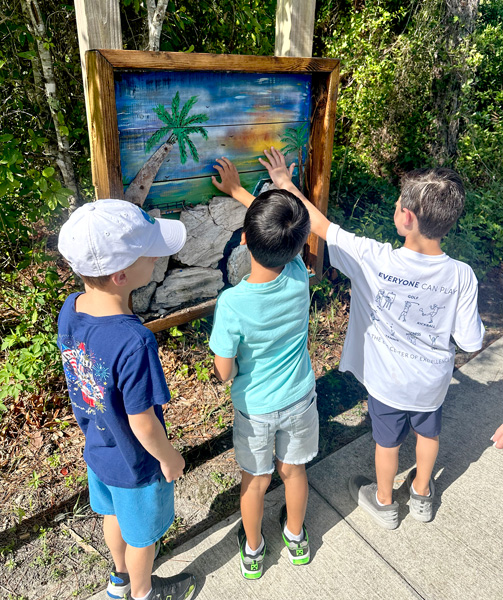
Participants socializing on a nature walk with sensory stations
Socialization
The opportunity to communicate effectively with the world is not a privilege but rather a right. Communication is crucial in the sharing of ideas, fulfilling goals and meeting basic needs. Communication, as it pertains to both expressive and/or receptive language, is a skill most individuals with autism find challenging on a daily and likely lifelong basis. This then leads to further challenges with socialization and the processing of more nuanced conversation and social conventions, such as reading non-verbal body language and facial expressions. According to the National Autistic Society, “autism is a lifelong developmental disability which affects how people communicate and interact in the world” and that understanding both spoken and non-verbal communication may be challenging (2025). The proper utilization of both environmental and personalized supports and adaptations promote opportunities for our participants to receive and respond to both their sensory and communication inputs while exercising, thus, enriching their social skills in a dynamic setting. In a meta-analysis from the Research in Autism Spectrum Disorders journal, researchers confidently report significant positive effects of physical exercise on patients’ motor skills and social interactions (2012). In another study they found exercise to be an effective pathway to developing social and communication skills in an engaging and physically beneficial approach, leading to improvements in specific communication and conversational skills such as “listener knowledge” and “topic management” (Fox, 2015). In my own experience as a CTRS, implementing programs that include the Els for Autism Social-Communication assessment, fitness, exercise, and adaptive sports programs are social circumstances where there is constant receptive and responsive communication in a highly engaging environment. Personal observations I recall include athletes initiating conversations with coaches and peers, volunteering to review class objectives and rules to the group, and openly cheering on others, all actions that previously may have felt unfamiliar or daunting. Opportunities for peer interactions and coach/instructor feedback are endless for individuals with autism to further develop their social and communication skills.
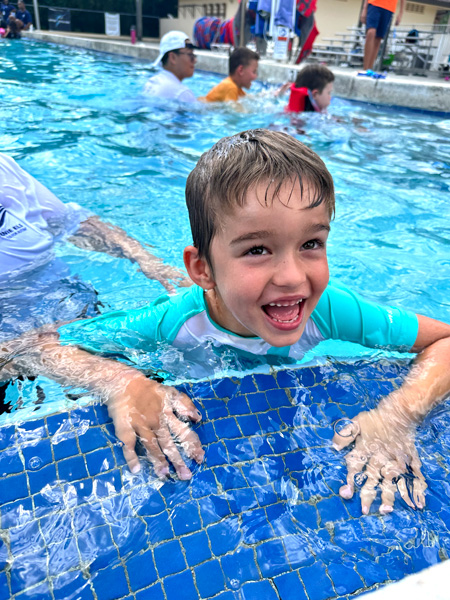
Client overcoming fear of the water and engaging in aquatic activities
Self-Confidence
While there are increased benefits socially in group exercise activities, finding empowerment through strength, balance, and additional physical benefits can lead to remarkable improvements in an individual’s self-confidence. In my experiences at Els for Autism, participation in a setting that many athletes are entering for the first time requires courage and an emotionally safe environment. Providing these aforementioned adaptations and supports on a frequent and consistent basis, can rapidly build an individual’s self-confidence. This is evidenced by athletes offering to demonstrate exercises for the class, sharing and conversing with peers and coaches, celebrating accomplishments made, and personal testimonies about feeling “stronger” and “happier” through their participation.
Individuals with autism, having gained confidence and feeling empowered through exercise, can overcome obstacles and hinderances that would otherwise prevent them from reaching their personal goals, even in other non-active domains of their lives (personal relationships, vocational interests, etc.). Confidence is a clear benefit received in exercise-based interventions and, when implemented in a therapeutic setting, statistically increases (Orhan, 2023).
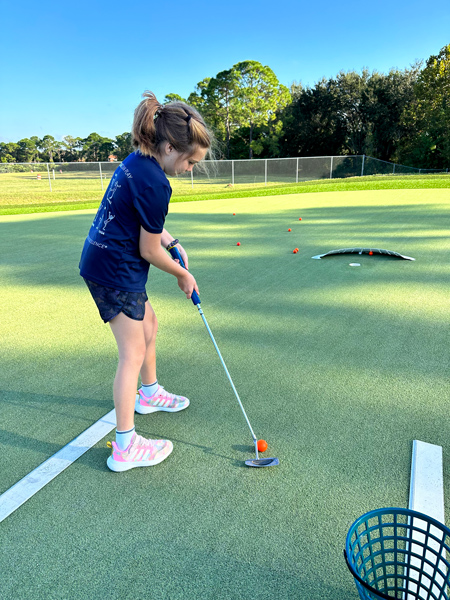
An athlete independently participating in an adaptive golf station
Independence
For many individuals with autism, independence is a lifelong goal. Therapeutic recreation and physically active outlets are effective methods in furthering independence within this population. As noted above, countless skills developed in an active and exercise-focused environment can be universally applicable. For example, setting up and breaking down of equipment for a specific fitness class incorporates organizational as well as motor and spatial skills. Retrieving what is required for a specific task, finding an appropriate space away from others, and returning equipment safely are tasks individuals use daily, and, when experienced in multiple settings, increase confidence, familiarity, and overall independence. When individuals are supported through exercise to develop self-confidence in tandem with the ability to socialize effectively, their opportunities for choice and independence skyrocket. In observations made within the Ernie Els #GameON Autism® Fitness program, athletes are offered opportunities for choice and are encouraged to self-advocate within lessons fostering independence throughout their participation. Movement from one place to another, dressing and feeding oneself, as well as other daily tasks are refined and introduced to our athletes in a setting where they may be prompted to use a box jump, hold a weight in their hand, and use precision in their actions to meet a goal. With health comes increased independence and the ability to move through life without these added limitations.
Conclusion
Individuals with autism, with their sensory input needs, social-communication, and motor challenges, continue to see remarkable improvements made within any or all life domains through the implementation of Recreation Therapy interventions. Exercise and fitness in a therapeutic recreation setting is evidenced to show increased socialization, self-confidence, and independence in individuals with autism. When individuals who experience life with sensory social and communication sensitivities are provided with opportunities for exercise, evidence shows that there is a clear correlation to improvement in these skills. It is the responsibility of CTRS’ everywhere to utilize exercise interventions in efforts to provide a holistic and evidence-based treatment plan that support the development of individuals with autism and their overall quality of life. When our participants feel empowered and have a voice to lead the life they desire, their possibilities are truly endless.
Elizabeth Reisinger, CTRS, is Recreation Services Coordinator at Els for Autism Foundation ®. You can reach her via email at elizabeth.reisinger@elsforautism.org and learn more about recreation programming, adaptive sports and fitness, and recreation therapy on the Els for Autism website: https://www.elsforautism.org/.
References
Devine, M. A., & Ripp, J. A. C. (2017). Introduction to the Special Issue: The Role of Therapeutic Recreation With People on the Autism Spectrum. Therapeutic Recreation Journal.
Fox, Christopher, “The effects on physical exercises to improve social communication skills of adolescents with autism” (2015). Theses and Dissertations. 470.
National Counsel for Therapeutic Recreation Certification. (2024). About recreational therapy. NCTRC. https://www.nctrc.org/about-ncrtc/about-recreational-therapy
Orhan, B. E. (2023). THE IMPACT OF PHYSICAL ACTIVITY ON THE QUALITY OF LIFE OF INDIVIDUALS WITH AUTISM SPECTRUM DISORDER. International Scientific Conference: The Infinity of the Human Performance, 1–10.
Rutherford, M., Baxter, J., Grayson, Z., Johnston, L., & O’Hare, A. (2019). Visual supports at home and in the community for individuals with autism spectrum disorders: A scoping review. Autism, 24(2), 447–469. https://doi.org/10.1177/1362361319871756
Sowa, M., & Meulenbroek, R. (2012). Effects of physical exercise on autism spectrum disorders: A meta-analysis. Research in Autism Spectrum Disorders, 6(1), 46–57. https://doi.org/10.1016/j.rasd.2011.09.001
Stavrou, K. (2024). Independent Living for individuals with autism. Advances in Medical Technologies and Clinical Practice, 151–170. https://doi.org/10.4018/979-8-3693-6026-2.ch008
Steinbrenner, J. R., Hume, K., Odom, S. L., Morin, K. L., Nowell, S. W., Tomaszewski, B., Szendrey, S., McIntyre, N. S., Yücesoy-Özkan, S., & Savage, M. N. (2020). Evidence- based practices for children, youth, and young adults with Autism. The University of North Carolina at Chapel Hill, Frank Porter Graham Child Development Institute, National Clearinghouse on Autism Evidence and Practice Review Team
Toscano, C. V., Ferreira, J. P., Quinaud, R. T., Silva, K. M., Carvalho, H. M., & Gaspar, J. M. (2022). Exercise improves the social and behavioral skills of children and adolescent with autism spectrum disorders. Frontiers in Psychiatry, 13. https://doi.org/10.3389/fpsyt.2022.1027799
Weir, E., Allison, C., Ong, K. K., & Baron-Cohen, S. (2021). An investigation of the diet, exercise, sleep, BMI, and health outcomes of autistic adults. Molecular Autism, 12(1). https://doi.org/10.1186/s13229-021-00441-x
What is autism. National Autistic Society. (2025). https://www.autism.org.uk/advice-and-guidance/what-is-autism




